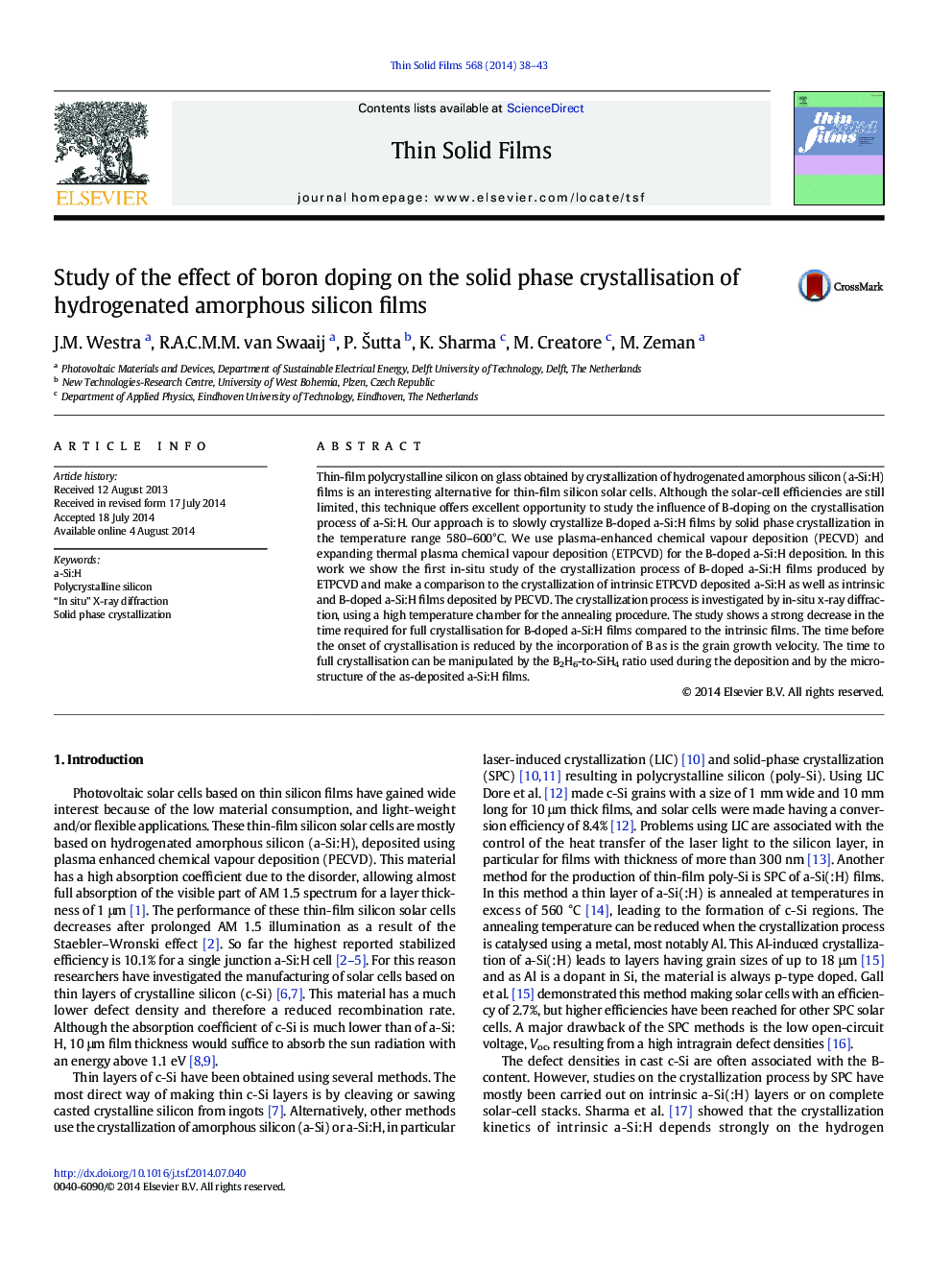| Article ID | Journal | Published Year | Pages | File Type |
|---|---|---|---|---|
| 1665343 | Thin Solid Films | 2014 | 6 Pages |
•Solid-phase crystallization of B-doped a-Si:H films is presented.•Crystallization study of B-doped and intrinsic a-Si:H by in-situ x-ray diffraction•The microstructure and B-doping of a-Si:H influences the crystallisation process.•B enhances the grain growth rate, but the effect on the nucleation rate is limited.
Thin-film polycrystalline silicon on glass obtained by crystallization of hydrogenated amorphous silicon (a-Si:H) films is an interesting alternative for thin-film silicon solar cells. Although the solar-cell efficiencies are still limited, this technique offers excellent opportunity to study the influence of B-doping on the crystallisation process of a-Si:H. Our approach is to slowly crystallize B-doped a-Si:H films by solid phase crystallization in the temperature range 580–600°C. We use plasma-enhanced chemical vapour deposition (PECVD) and expanding thermal plasma chemical vapour deposition (ETPCVD) for the B-doped a-Si:H deposition. In this work we show the first in-situ study of the crystallization process of B-doped a-Si:H films produced by ETPCVD and make a comparison to the crystallization of intrinsic ETPCVD deposited a-Si:H as well as intrinsic and B-doped a-Si:H films deposited by PECVD. The crystallization process is investigated by in-situ x-ray diffraction, using a high temperature chamber for the annealing procedure. The study shows a strong decrease in the time required for full crystallisation for B-doped a-Si:H films compared to the intrinsic films. The time before the onset of crystallisation is reduced by the incorporation of B as is the grain growth velocity. The time to full crystallisation can be manipulated by the B2H6-to-SiH4 ratio used during the deposition and by the microstructure of the as-deposited a-Si:H films.
